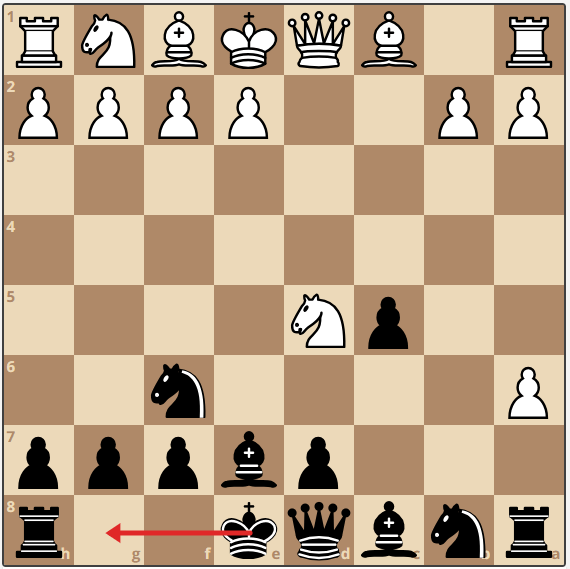
The Benko Blueprint: From Theory to Practice
I'm very excited for the release of my third Chessable course "The Benko Blueprint: From Theory to Practice" focusing on a newer way of playing the Benko Gambit (1. d4 Nf6 2. c4 c5 3. d5 b5 4. cxb5 a6 5. bxa6 e6!) and learning all about "compensation". You can check it out on sale here: https://www.chessable.com/the-benko-blueprint-from-theory-to-practice/course/143241/
(Technically the course came out on June 1st but I'm a bit slow on the blog post ![]() )
)
In this blog post I wanted to give a basic overview of some of the chapters in the course so that you can see what kind of things you will learn if you check it out:
Chapter 1: Introduction
I give an introduction to the Benko Gambit opening along with some historical information.
Chapter 2: What is "Compensation"?
One of the most important chapters of the course! I define the term "compensation", explain how to evaluate positions and give a lot of examples of how you can evaluate positions where you're down material but have other advantages. It's very important to be able to understand how compensation works if you're going to play the Benko Gambit!
Chapters 3-5: Quickstarter Guides (Benko Gambit Half/Fully Accepted; Benko Gambit Declined; Non-Benko Gambit Lines)
The variations taught in these three chapters are some of the most common variations the majority of players will see in their own games. If you want a "quick start" to the course then these are the first chapters and variations to work through.
Chapter 6: Benko Gambit Fully Accepted 5...e6 - 7...Be7 Mainline
The mainline of the Benko Gambit has historically been 5...Bxa6 or 5...g6 which are the two most common ways of playing the opening. However, modern computer engines actually prefer the move 5...e6 which is a newer, more fresh way of playing. In this chapter I go over what I call the "mainline" which involves the move 7...Be7 after the sequence of moves 1. d4 Nf6 2. c4 c5 3. d5 b5 4. cxb5 a6 5. bxa6 e6 6. Nc3 exd5 7. Nxd5.

Chapter 7: Benko Gambit Fully Accepted 5...e6 - 7...Nxa6 Alternative
I cover the move 7...Nxa6 which takes the game in a different direction than 7...Be7 but not without other interesting ideas.
Chapter 8: Benko Gambit Half-Accepted 5.b6
Next, we deal with a few ways that White can play if they do not capture the a6-pawn. Against 5. b6 I recommend staying consistent and playing 5...e6 again.
Chapter 9: Benko Gambit Half-Accepted 5. e3 Modern
Against 5. e3 I recommend another consistent approach with 5...e6. This consistency makes learning the repertoire much easier ![]()
Chapter 10: Benko Gambit Half-Accepted 5. Nc3 Zaitsev
Against 5. Nc3 I recommend 5...axb5 6. e4 b4 7. Nb5 d6 with an interesting battle. White has more central space but their knight on b5 can be a bit misplaced.
Chapter 11: Benko Gambit Half-Accepted 5. f3 Dlugy
Against 5. f3 I recommend 5...axb5 6. e4 Qa5+ 7. Bd2 b4 8. Na3 e6. Another e6 move attacking our opponent's central d5-pawn!
Chapters 12-14: Benko Gambit Declined 4. Nf3, 4. Qc2 and Fourth Move Sidelines
The next few chapters cover variations where White doesn't capture the b5-pawn. In most of these situations I recommend playing ...b4 and getting a ...c5+...b4 vs d5+c4 pawn structure which I think is very interesting for us.
Chapter 15-16: 3. Nf3 and Third Move Sidelines
If White doesn't play the move 3. d5 then we will usually be trading the pawns on d4 and then developing our f8-bishop quickly.
Chapter 17: 2. Nf3 c5 3. d5 b5
One of my favorite chapters in the course. I recommend an interesting approach with 4. Bg5 g6!? which leads to an imbalanced pawn structure a lot of the time and very combative play around the center.
Chapter 18: 2. Nf3 c5 Sidelines
A few sidelines are covered here and our response depends on what White plays.
Chapters 19-20: London System 2. Bf4 and London System 2. Nf3
I devote two chapters in the course to playing against the London System depending on which way White starts. If they play 1. d4 Nf6 2. Bf4 then I recommend 2...c5 3. e3 Qb6 4. Nc3 d6 while if they play 1. d4 Nf6 2. Nf3 c5 3. c3 d5 4. Bf4 then I recommend 4...Qb6.
Chapters 21-23: Trompowsky, Jobava London and Second Move Sidelines
Everything is covered! With the Trompowsky I recommend 2. Bg5 c5 and against the Jobava London I recommend 2. Nc3 d5 3. Bf4 c5.
Chapters 24-26: Model Games, My Blitz Games and Puzzles
I provide 23 model games (with annotations), 27 blitz games (no annotations) and 50 puzzles to work you way through.
Overall, I'm very happy with how the course turned out and would love it if you checked it out on Chessable. The course is on sale for a few more days: https://www.chessable.com/the-benko-blueprint-from-theory-to-practice/course/143241/
I wish you the best in your continued chess improvement ![]()
